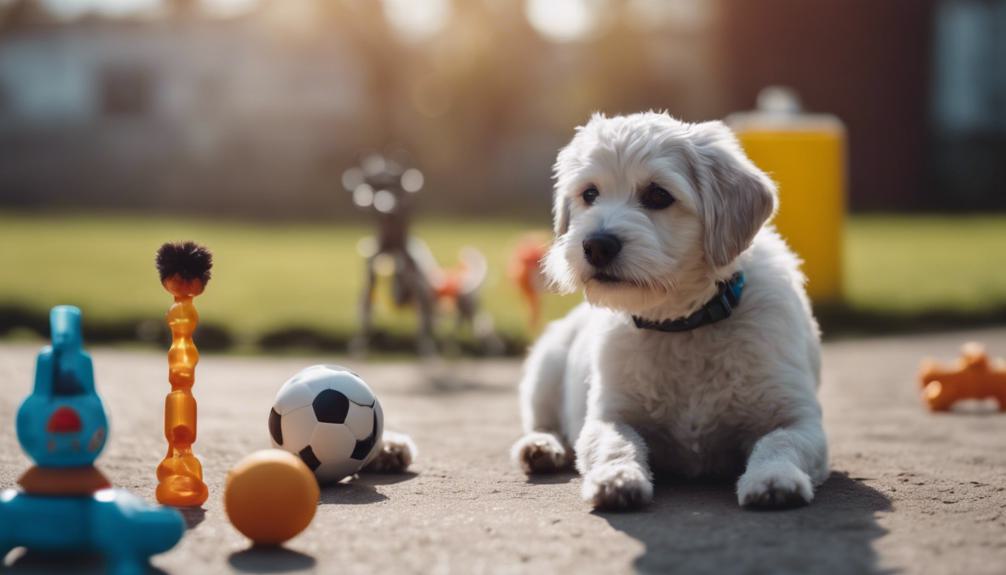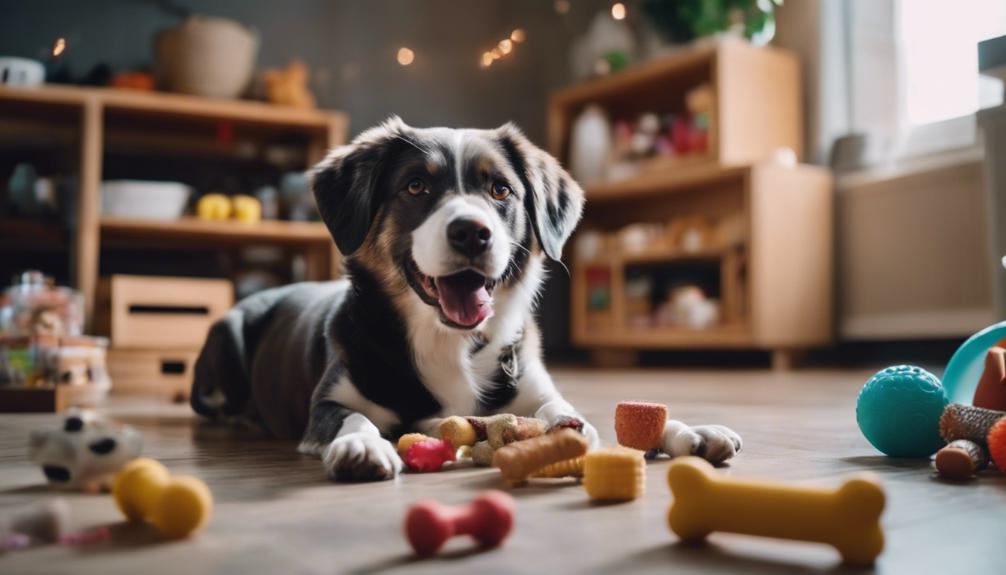How to Train Your Dog Not to Bite? Expert Techniques
To prevent your dog from biting, focus on socializing and rewarding good behavior. Start early by addressing biting with high-pitched sounds and chew toys. Provide distractions like toys and give clear commands consistently. Learn to recognize signs of aggression and act swiftly. Obedience training is key for trust and safety. These tips can help curb biting habits effectively and strengthen your bond with your furry friend. More valuable insights await to guide you in fostering a safe and harmonious relationship with your pet.
Socialization for Preventing Biting
To minimize the risk of your dog biting, focus on socializing them with a variety of people and animals. This process reduces fear and aggression, which are common causes of biting. Socialization helps your dog become more confident and comfortable in different settings. By exposing your dog to diverse environments, you can lessen their anxiety and fear, thereby reducing the likelihood of biting.
For rescue dogs, it’s crucial to introduce them to new situations in a positive way. Socializing adult dogs might take more time, but it’s equally important. When dealing with anxious dogs, gradually exposing them to new experiences can make them feel more secure and less prone to aggression.
Reward-Based Training Techniques
How can reward-based training techniques prevent biting behavior in dogs?
Using positive reinforcement, or reward-based training, is a proven method to shape your dog’s behavior effectively. By giving treats, playtime, or praise when your dog behaves well, you discourage biting and promote good behavior. Here are five practical reasons why reward-based training works well:
- It builds a strong and trusting relationship between you and your dog.
- This method makes learning enjoyable for your dog.
- Reward-based training boosts your dog’s confidence and self-esteem.
- Enjoying rewards together strengthens your bond with your pet.
- Your dog learns that good behavior leads to positive rewards.
Recognizing Aggression Signs

Can you spot when your dog shows signs of aggression? Knowing how to read your dog’s body language is key to preventing bites. Look for specific behaviors such as hackles standing up, teeth showing, and ears lying flat. These are clear signs that a dog might act aggressively.
Another warning is growling. If you see these signs, act quickly to stop any aggressive actions. Early intervention helps teach your dog proper behavior and prevents future biting. By paying close attention and reacting fast, you’ll effectively train your dog not to bite.
Starting Early: Bite Training Tips
To successfully train your dog not to bite, begin when they’re young. Addressing this behavior early is crucial for developing a well-mannered pet. Here are straightforward tips to guide you through bite training:
Make a high-pitched sound or yelp to simulate the feedback a puppy would get from its littermates. This teaches your dog to moderate the strength of their bite.
Provide your puppy with suitable chew toys. These redirect their biting impulses and promote healthy chewing habits.
End playtime right away if your puppy bites. This consistent reaction helps reinforce bite inhibition.
Apply bitter sprays on items your puppy shouldn’t chew. This discourages bad chewing habits and encourages the use of their toys.
Remember, patience and consistency are vital in teaching your dog proper bite behavior.
These practical steps can help prevent biting issues as your dog grows, ensuring they become a well-behaved companion.
Providing Distractions and Clear Commands

To effectively curb your dog’s biting habits, provide a variety of engaging distractions and communicate through clear, straightforward commands. If your dog shows signs of wanting to bite, quickly redirect their focus to a chew toy or an interactive toy. This method of positive reinforcement teaches them to chew on suitable items instead of biting. Always have a selection of chew toys handy to keep your dog occupied and prevent unwanted biting.
Moreover, use concise and consistent commands such as ‘no bite’ or ‘gentle’ to clarify expected behavior. Reward good behavior with praise or treats to strengthen these positive actions.
Obedience Training Importance
Obedience training is crucial for teaching your dog self-control and discipline, which can prevent biting. Here are five key reasons why this training is essential:
Builds Trust: Training helps establish a bond between you and your dog. As your dog learns to follow your commands, trust and respect grow.
Enhances Communication: When you use clear commands, your dog understands what you expect. This clarity reduces confusion and lowers the chances of aggressive behavior.
Increases Safety: A well-trained dog is less likely to show dangerous behaviors. This keeps everyone safer.
Boosts Confidence: As your dog masters new skills, their confidence grows. Confident dogs are less likely to bite out of fear or anxiety.
Strengthens Your Relationship: Working together on training strengthens your bond. A strong relationship with your dog makes biting incidents less likely.
Obedience training isn’t just about commands—it’s about creating a respectful and understanding relationship with your dog that promotes safety and happiness.
Frequently Asked Questions
Can a Dog Ever Be Trained Not to Bite?
Yes, a dog can be trained not to bite. Consistent socialization, positive experiences, and reward-based methods can help. Comprehending why dogs bite and applying effective training strategies are key. Spaying or neutering also aids in reducing aggression.
How Do I Get My Dog to Stop Biting Me?
To get your dog to stop biting you, try yelping when they bite, end playtime immediately after a bite, offer chew toys as alternatives, use time-outs for calming, and reward good behavior with praise to encourage better habits.
How to Prevent a Dog From Biting You?
To prevent a dog from biting you, offer chew toys for redirection, end playtime after a bite, and use positive reinforcement for good behavior. Professional obedience classes can help if home methods aren’t effective.
How Should I Teach My Dog Not to Bite?
To teach your dog not to bite, redirect with chew toys, reward good behavior, and end playtime post-bite. Consistency and patience are crucial. Remember, positive reinforcement works best. Your furry friend will learn with your guidance.
Conclusion
To prevent your dog from biting, start by socializing them at an early age. Use reward-based training methods to encourage good behavior. It’s important to recognize any signs of aggression early on. Begin bite inhibition training as soon as possible.
If your dog gets overly excited, distract them with toys or commands. Always use clear, simple commands during training sessions. Regular obedience training is crucial to stop biting habits.
Stick with these strategies and be patient; teaching your dog not to bite takes time and consistent effort.

